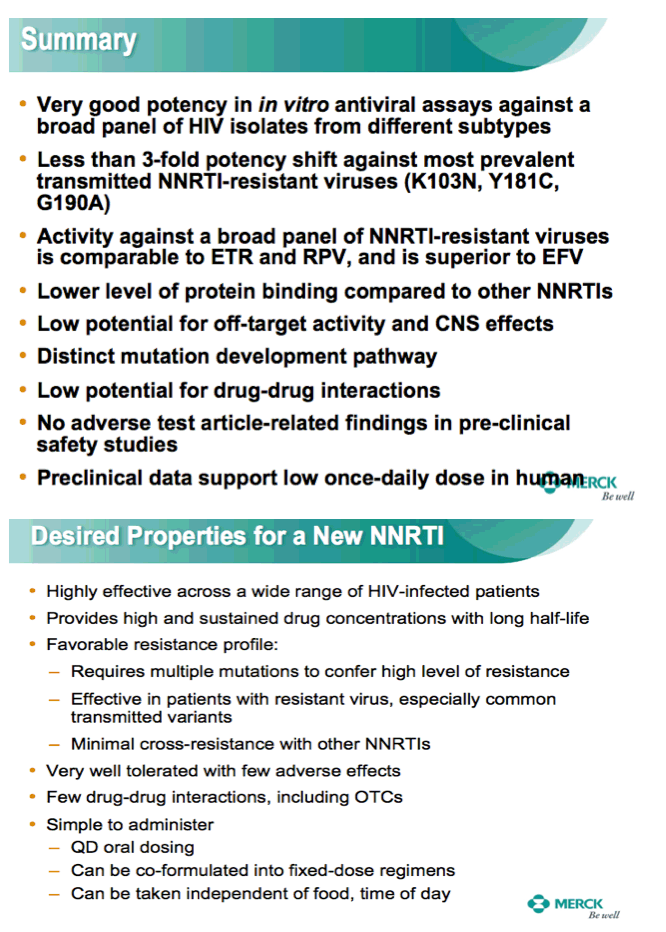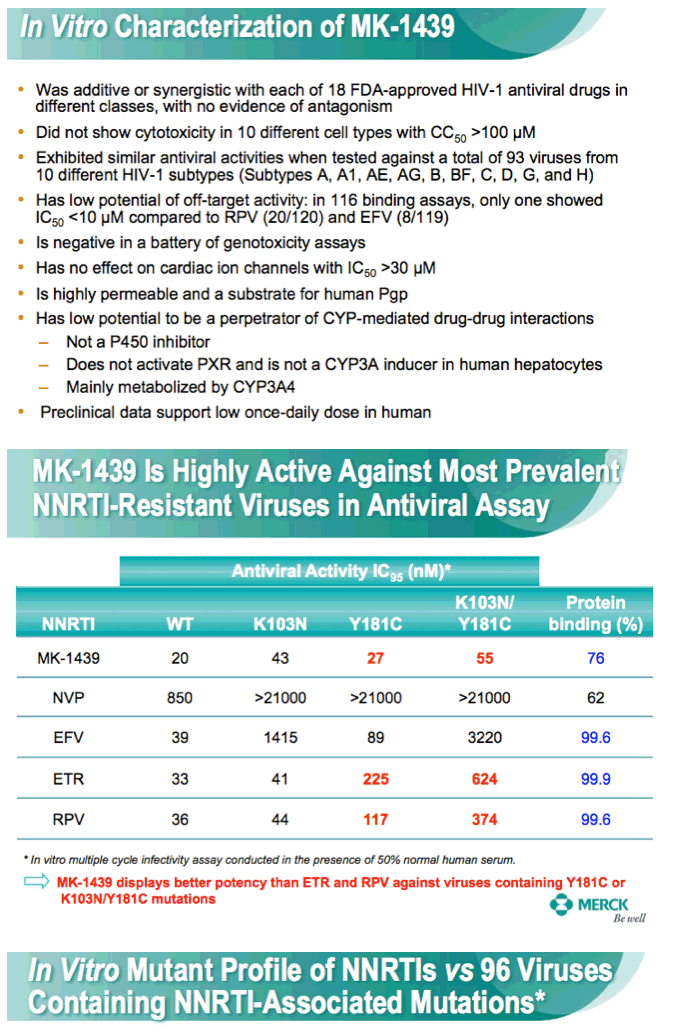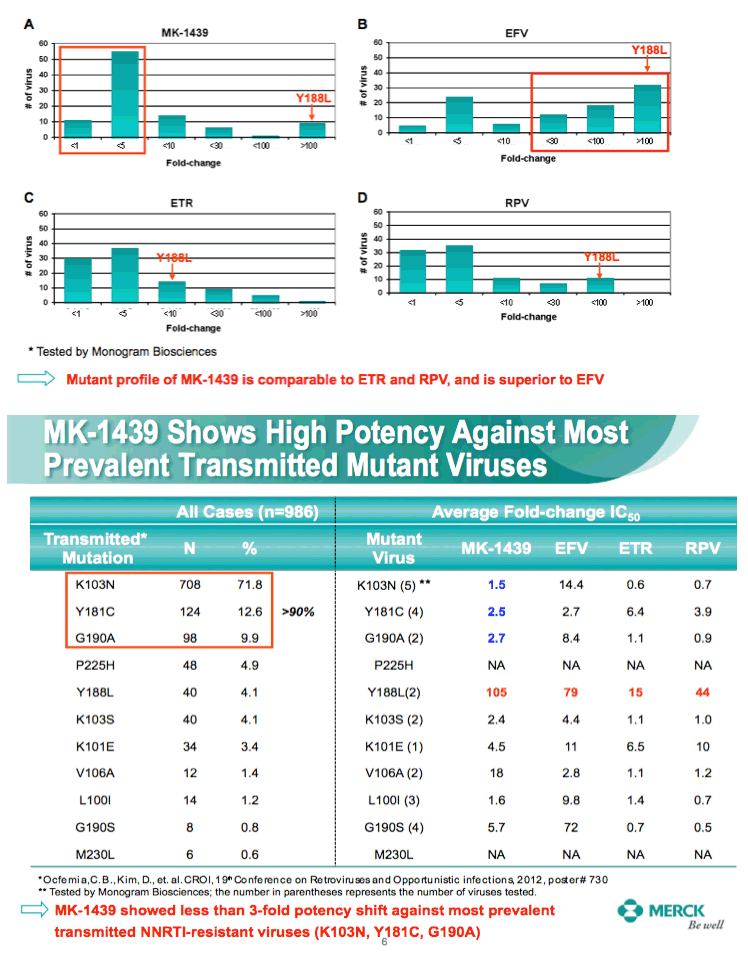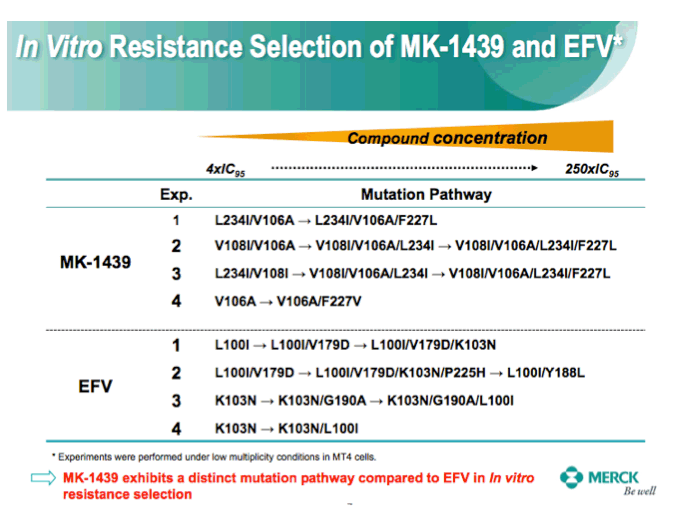 |
 |
 |
| |
Antiviral Activity and In Vitro Mutation Development Pathways of MK-1439: A Novel Non-Nucleoside Reverse Transcriptase Inhibitor (NNRTI)
|
| |
| |
Reported by Jules Levin
52nd ICAAC Sept 9-12 2012 SF
Ming-Tain Lai
ICAAC
September 10, 2012
ABSTRACT
MK-1439 is a potent and selective inhibitor of the Human Immunodeficiency Virus Type 1 (HIV-1) reverse transcriptase (RT). It belongs to the class of non-nucleoside reverse transcriptase inhibitors (NNRTIs). When assayed using purified recombinant wild-type (WT), K103N, and Y181C RT, MK-1439 inhibited RNA-dependent DNA polymerization with an IC50 of 12, 9.7, and 9.7 nM, respectively. In the presence of 10% normal human serum, MK-1439 displayed EC95 of 11, 13, 16, and 31 nM against WT, K103N, Y181C, and K103N/Y181C virus, respectively. Furthermore, in the presence of 50% serum, MK-1439 showed excellent potency in suppressing the replication of WT virus with EC95 of 20 nM as well as K103N, Y181C, and K103N/Y181C mutant viruses with EC95 of 43, 27, and 55 nM, respectively. MK-1439 exhibited similar antiviral activities when tested against 10 different HIV-1 subtype viruses (a total of 93 viruses). In addition, the susceptibility of a broader array of clinical NNRTI-associated mutant viruses (a total of 96 viruses) to MK-1439 was investigated using single-cycle HIV-1 infection assays. In that testing, the mutant profile of MK-1439 was superior overall to that of efavirenz and comparable to that of etravirine and rilpivirine. Among the mutants tested, only few mutant viruses containing Y188L or triple mutation exhibited significant resistance to MK-1439. To determine whether MK-1439 selects for novel resistance mutations, in vitro resistance selections were conducted under high and low multiplicity of infection (moi) conditions. F227C mutation was identified in the breakthrough viruses from high moi selection, whereas V108I and V106A were the mutations responsible for viral breakthrough under low moi conditions. The potential resistance mechanism will also be discussed.




|
| |
|
 |
 |
|
|